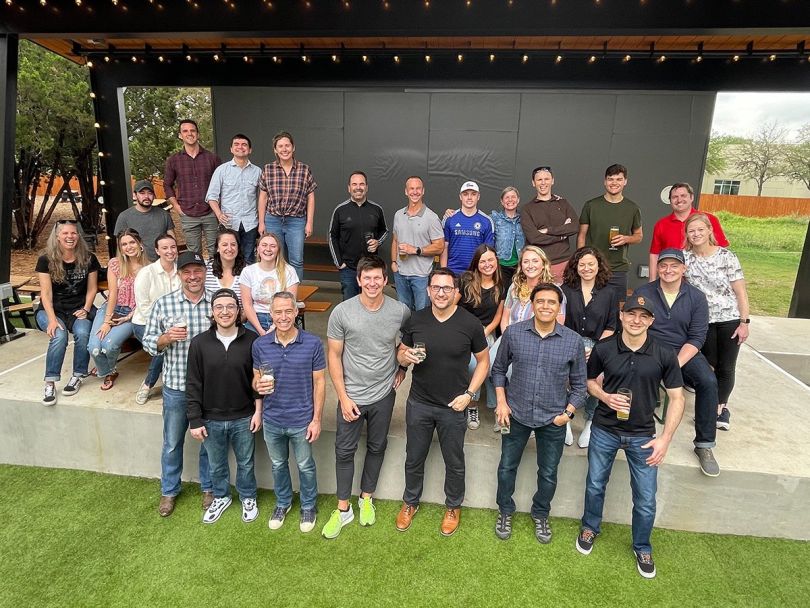4.53 million.
That’s how many workers quit their jobs in March 2022 — almost three percent of the American workforce. In the last 10 months of 2021, the new labor movement set the record for employee departures. As a pandemic-fueled Great Resignation movement kicked off an uncorked stream of exodus from companies big and small, the labor market became a quitter’s one.
For Murph Holder, VP of people at Ontic, it’s not a foregone conclusion. With every pattern, there are exceptions — it’s just a matter of being prepared. “We’ve done our best to let employees know the things we are focused on and how we’re tracking towards our goals,” she said. Even before 2021, the people team at Ontic has been laying down groundwork for retention, keeping expectations clear and employee support visible.
Though a third of workers attributed a new job change to the pandemic, the underlying symptoms exacerbated by Covid-19 were more evident of the collective angst. According to the Pew Research Center, low pay, lack of advancement opportunities and being disrespected were among the highest cited reasons for departure. In the end, it came down to a sense of being seen and considered by their employers.
“Employees don’t want to jump from employer to employer, but without insight into what is driving the people team’s decisions, it can be hard to see yourself with an organization long term,” said Holder.
Attrition is a natural part of any industry, and how a company responds to turnover — historic or otherwise — goes hand-in-hand with the image that is projected to both current employees and potential applicants. At Ontic, even the healthiest team dynamic will see talent leave. And by celebrating their success and highlighting their accomplishments, the company shows support every step of the way.
“Companies are not families, they’re more like communities,” said Holder. “People are free to leave when it feels right and that’s okay.” In 2022, the company saw statistical success in employee retention. To get a closer look at how they’ve kept turnover down, Built In Austin spoke with Holder to glean her philosophy on embracing the lessons of the Great Resignation.

Ontic offers protective intelligence software to security teams so companies can better protect their employees, customers and assets from physical threats. The company’s dynamic protection platform combines real-time and historical data for analysis and real-time intelligence, housed in an all-in-one solution. Like many tech companies entering a changed labor environment after the pandemic, Ontic understood the Great Resignation’s risk of exodus. However, VP of People Murph Holder feels confident they have a sound foundation for employee retention. “Onticians knew what a career here could look like for them,” she said.
What has been your greatest learning lesson from the Great Resignation?
In 2022, we only saw five percent voluntary attrition globally, which is significantly lower than what other similar companies experienced. Prior to 2021, we began laying the groundwork for processes and programs to support our employees and make sure they knew what to expect from a career at Ontic. I think this was instrumental in our ability to retain talent throughout 2022.
How are you applying that lesson to your company’s own retention efforts? What do people in 2022 need from their employer to stay?
We’re continuing to implement, iterate and improve on the programs that we’ve been developing. The lesson we’ve learned is that you don’t have to do everything at once — nor can you — but you can be very transparent along the way about your plans and how you intend to execute. People at Ontic tend to lead with empathy and they know that programs that are effective and scalable take time to build. If you’re silent throughout the process, it’s human nature to assume that the initiative has been abandoned or deprioritized.
We’ve done our best to let employees know the things we are focused on and how we’re tracking towards our goals. We’ve made missteps along the way and had to course correct, but overall we’ve kept employees apprised of people programs and given them the chance to provide their feedback as the programs come to life.
People just need to know that you’re considering them and their needs when you’re thinking through the needs of the business. That has been our experience.
You’d be surprised how often employees just need to see they are supported.”
What advice do you have for a manager who is faced with a top performer who is considering leaving?
First, try to understand why they’re considering leaving. Ask — don’t just assume it’s money. More often than not money is the easy answer, but if you dig, it might be something else like opportunities to work on interesting projects or the ability to try out-of-the box approaches with the psychological safety to fail. If it’s something within your ability to grant, go to bat for them; show them that you have their back and are willing to get them what they need. You’d be surprised how often employees just need to see they are supported.
If they have already decided to leave, let them go and celebrate them. Call out the skills and competencies they gained while at your company that made them ready to take on a new challenge.
In the same breath, be prepared. Don’t bury your head in the sand and think that just because you have a healthy team dynamic no one will leave. Have a strong succession plan in place. No one employee’s exit should ever rock the boat so much that it’s detrimental to the business. Show your employees that you support them 100 percent, no matter what.







